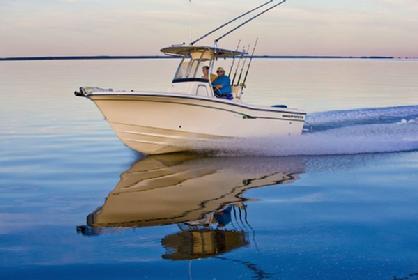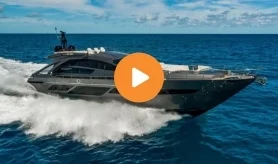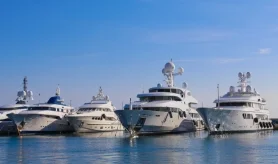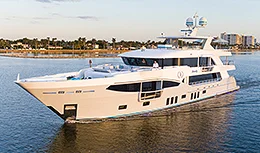- Alaskan Yachts
- Azimut Yachts
- Back Cove Yachts
- Beneteau Yachts
- Benetti Superyachts
- Bertram Yachts
- Boston Whaler
- Broward Yachts
- Buddy Davis Sportfish
- Burger Yachts
- Cabo Yachts
- Catamarans
- Carver Motoryachts
- Center Console
- Chris-Craft Yachts
- Cruisers Yachts
- DeFever Trawlers
- Dufour Sailboats
- Fairline Yachts
- Feadship Yachts
- Ferretti Yachts
- Formula Yachts
- Fountaine Pajot Cats
- Grady-White
- Grand Banks Trawlers
- Hargrave Yachts
- Hatteras Yachts
- Hinckley Picnic Boats
- Horizon Yachts
- Hydra-Sports
- Intrepid Boats
- Jarrett Bay Sportfish
- Jeanneau Yachts
- Kadey-Krogen Trawlers
- Lazzara Yachts
- Lekker Boats
- Luhrs Sportfish
- Marlow Yachts
- Maritimo Yachts
- Marquis Yachts
- Mazu Yachts
- McKinna Motoryachts
- Meridian Yachts
- Midnight Express
- MJM Yachts
- Mochi Craft
- Neptunus Motoryachts
- Nordhavn Trawlers
- Nordic Tugs
- Numarine Yachts
- Ocean Alexander Yachts
- Ocean King
- Offshore Yachts
- Outer Reef
- Oyster Sailing Yachts
- Pacific Mariner Yachts
- Palmer Johnson Yachts
Grady White 230 Fisherman
![]()

Source: Hookedonfishingboats
Grady-White Fisherman 230
Party under a big tent.
If boats were politicians, Grady-White’s new Fishermen 230 would be the miracle worker we’ve all been looking for: a Conservatiberal. Its GOP assets include Grady-White’s time-tested no-rot ply-cored stringers, a flawless fit and finish, plate-back hardware, and an un-perforated self-bailing deck design. Yet at the same time the Fishermen 230’s liberal side brings new ideas to the table, like a console-integrated T-top, a cockpit layout that boosts usable space, an addition-ready oversized breaker panel, and a forward seating arrangement that transforms into a single-level casting deck.
Old, New, Smart
The Fishermen 230 even has a Libertarian side: with a nice mix of fishing features and creature comforts, it can be used for anything from canyon expeditions to water skiing—you do as you choose. But the biggest dose of smarts comes from Grady-White’s design team (big surprise… not!) which decided to develop this boat specifically for single Yamaha four-stroke V6 powerplants. Some builders might attempt to accommodate twin outboards on boats in this size range, to add a safety margin and piece of mind for those who make long runs to the deep. But modern outboard engines are not like those built during the days of Kennedy, Regan, Clinton, and Bush. Their reliability is so much better that with a 2010 four-stroke on the transom, you can make long runs to the deep with plenty of confidence. Added to that confidence is a healthy dose of unexpected speed and efficiency. The 230 I tested was rigged with 300 crowd-pleasing, heart-throbbing, ground-shaking hoofs under the cowl, and its performance is nothing short of stellar: at a mellow 3500 RPM cruise it peaks efficiency at an eco-pleasing 3.2 miles to the gallon, while running at 27.4-mph. Throttle up to 4500 RPM and it hits 36.8-mph while still getting 2.4 miles to the gallon. You’re competing in a tournament, and you’re not going to hold back any more then a tea-party activist does? Then set the throttle to wide-open and hold on tight as this rig blasts over the waves at 47.5-mph.
Congressional Appointments
When you’re at the hotspot and ready to set your lines, take note of the angling enhancements all around you: a pair of 101-qt. insulated, overboard-draining fishboxes are integrated into the bow, and a 72-quart drink and food cooler with a well-cushioned seat sits in front of the console. For those of you who have had cooler seats before, you’ve surely noticed that the snaps on the seat cushions generally rip out or break after a season or two of use. But Grady makes their own seat for this cooler, and after yanking and pushing on it, I’m convinced its quality is far above the norm.
The transom houses a 35-gallon insulated, full-column inlet lighted livewell plus a three-drawer tackle box. Four rodholders reside in the gunwales, additional rods stow in horizontal racks for six under the gunwales, and there’s a standard raw-water washdown. Naturally the console houses a head compartment, which was where I found both of my complaints with the 230: the tops of the batteries are accessible via a hatch, but to remove them, you’ll have to break out a screwdriver and remove the entire panel. A roomier access that eliminated the need for tools would be advantageous. And the head compartment doesn’t have an opening port, the addition of which would be beneficial for those prone to seasickness and for venting the console after long “negotiation” sessions. Of course, everything on a boat—as in politics—is a compromise to one degree or another, and by eliminating the opening port you also eliminate potential leakage problems.
The console is also where I spotted two of the brightest ideas on the 230. The first is in the T-top, which mounts entirely on the console itself and eliminates the need for toe-stubbing pipework bases bolted to the deck. Some builders radical enough to attempt this design in the past have been troubled by the lack of structural integrity in a high-stress area, but Grady-White drums up support by integrating aluminum braces which tie into the console and stringer system. The second coup de tat can be found on the console door, which secures open with one of those slick little magnetic catches. There’s a big problem with these catches, one I’ve been harping about ever since they hit the market: while convenient, they aren’t strong enough to keep the door open in a rolling sea or even if the door catches a strong gust of wind. That leads to swinging doors and pinched body parts. Grady-White is the first builder smart enough to use a simple, nearly cost-free fix—a back-up strap you can use to secure the door open.
Figuring out how to get the tried-and-true to cooperate with the innovative may be almost unheard of in Washington, but in Greenville, North Carolina, they’ve got it down to a universally-accepted, debate-free science. So check out the 230 Fishermen, before you cast your ballot—in case you couldn’t tell already, it certainly gets my vote.
LOA – 22’8”
Beam – 8’6”
Draft (max.) – 2’0”
Dry weight – 4,002
Fuel capacity – 120
Max HP – 300
Price – $78,155
Observed performance notes w/2 people and half load fuel, single Yamaha F300 300-hp HP outboard, swinging a 15 1/2” x 17” three bladed stainless-steel prop:
|
Cruise RPM |
Speed in MPH |
Gallons per hour |
Miles per gallon |
|
Slow cruise/3500 |
27.4 |
8.7 |
3.2 |
|
Fast cruise/4500 |
36.8 |
15.4 |
3.0 |
|
Wide open throttle/6000 |
47.5 |
26.8 |
1.8 |



